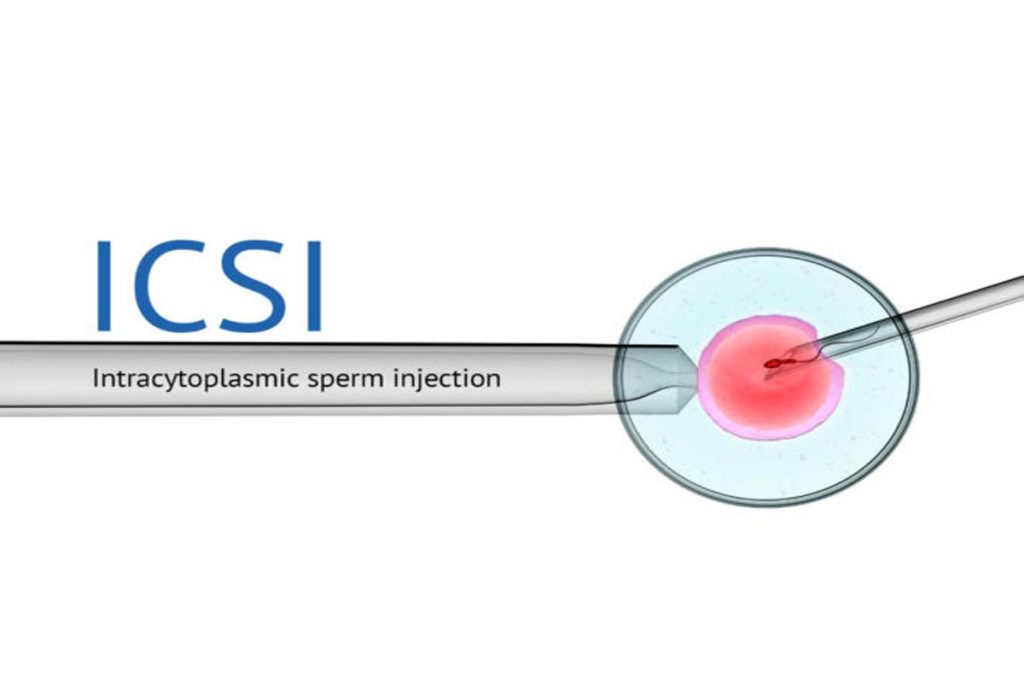
Introduction
Intracytoplasmic Sperm Injection (ICSI) is an advanced fertility treatment that can help couples facing infertility. Our ICSI technology and treatment plans are offered at top fertility clinics in Guntur, tailored to each couple’s unique fertility needs.
With high ICSI success rates and compassionate care, we are dedicated to transforming lives through the gift of parenthood. At the Birth Help Center in Guntur, we provide cutting-edge solutions for couples dealing with male factor infertility, helping them conceive.
What is Intracytoplasmic Sperm Injection?
ICSI or Intracytoplasmic Sperm Injection is a procedure in which a single sperm is directly injected into a mature egg to achieve fertilization. It is commonly used for male factor infertility issues like low sperm count, poor sperm motility, abnormal sperm morphology etc.
The resulting embryo is then transferred into the uterus for achieving pregnancy. With advanced micromanipulation techniques, ICSI allows couples to achieve successful conception rates even with severe male infertility conditions.
Why Choose ICSI at Birth Help Center?
At Birth Help Center Guntur, our fertility specialists have over 10 years of experience specifically providing ICSI treatment using the latest techniques and equipment. This has enabled us to achieve an excellent 60-70% ICSI success rate compared to the national average of 30-35%.
We also provide affordable ICSI cost packages, laser-assisted hatching to facilitate implantation and specialized IVF protocols for the most challenging cases. Most importantly, we go beyond medical treatment to provide emotional support through your ICSI journey.
Our Process
At the Birth Help Center, one of the top fertility clinics in Guntur, we deeply understand that each couple’s journey is unique, especially when going through the ICSI process. We strive to deliver tailored protocols that cater specifically to the individual fertility conditions of our patients.
Our comprehensive care extends beyond medical treatment to include counseling, coordination, and consistent, clear communication at every stage of the ICSI treatment. With support groups to provide emotional backing and a patient care team dedicated to understanding the root causes of each patient’s infertility issues.
We craft personalized solutions aimed at ensuring the best chances of success. Together with our unwavering commitment to the overall well-being of our patients, we outline the critical steps involved in the ICSI process, guiding you with expertise and empathy.
- Ovarian Stimulation: We stimulate the ovaries using injectable gonadotropins to optimize the growth and maturation of multiple eggs in a single Individualized dosages and monitoring help maximize results.
- Egg Retrieval: Eggs are retrieved transvaginal under ultrasound A light anesthesia is administered to ensure comfort. Our state-of-the-art lab tracks development and quality indicators.
- ICSI Fertilization: Our embryologists are specially trained to identify and select the healthiest sperm to directly inject into each egg using high-precision micromanipulation This optimizes the chances of fertilization.
- Embryo Transfer: The best-developing embryo(s) is transferred into the uterus at the blastocyst stage when implantation chances are highest. Additional embryos may be frozen for future
- Pregnancy Confirmation: A pregnancy blood test 12-14 days after embryo transfer checks for hCG hormone levels to determine successful First ultrasound scans confirm clinical pregnancy.
Success Stories
Rohit and Aditi struggled with infertility for years before approaching the Birth Help. Despite their young age, Rohit had a low sperm count making natural conception difficult. By opting for ICSI, the couple saw a successful twin pregnancy in their first attempt.
“We had lost hope of ever holding our baby in our hands. ICSI therapy gave us the precious gift of family,” says Aditi. There are hundreds of similar inspiring ICSI success stories from the Birth Help Center.
Nikhil and Tara had been trying unsuccessfully for a baby for over 5 years. Tests revealed issues with Nikhil’s sperm morphology and motility. Our fertility experts recommended customized ICSI using a specialized sperm selection technique.
The couple welcomed a healthy baby boy after their first ICSI cycle! “As new parents, it’s been the happiest time of our lives – thanks to the miracle of We will be forever grateful to the Birth Help Center” says Tara.
Padma and Sanjay were worried if they could ever have a biological child of their own after Sanjay was detected with an extremely low sperm count. ICSI with PICSI technology gave them The embryologist individually selected sperm by binding to a special dish before injection. Now blessed with beautiful twin girls, Padma says “Don’t lose hope, miracles can happen as they did for us through ICSI.”
There are hundreds of similar inspiring ICSI success stories from the Birth Help Center. Our patients’ emotional well-being matters just as much as clinical outcomes to us. We are privileged to be a part of their parenthood journey.
FAQs
Q: Is ICSI painful for women?
A: No, ICSI does not involve any painful procedures for women. It is conducted as part of the IVF process using anesthesia during egg retrieval. The subsequent embryo transfer is not painful either.
Q: What is the difference between IVF and ICSI treatment?
A: The key difference is that in ICSI, the embryologist selects one sperm and injects it directly into each mature egg. IVF involves placing collected sperm and eggs together for spontaneous fertilization before transfer.
Q: Does ICSI have any risks or side effects?
A: ICSI is considered a safe procedure with minimal risks when performed by trained professionals. Temporary side effects from fertility medication like bloating, and mood changes may occur. Ovarian hyperstimulation syndrome is a rare risk that is carefully monitored.
Q: What is the ICSI success rate per cycle?
A: As per records, our ICSI success rates per transfer is 60-65% for women under 35 yrs and 45-50% for over 35 yrs. Rates vary case-by-case based on medical history. Multiple cycles may be needed for some patients.
Q: How is ICSI different from traditional IVF?
A: In IVF, fertilization happens by keeping eggs and sperm together for natural selection. ICSI bypasses this natural selection process through the direct injection of sperm into eggs. This helps patients with severe male infertility conceive.
Our fertility specialists are available to answer any further questions on ICSI you may have. Please call our center or book a consultation!
Contact Us
Unlock the door to parenthood with Birth Help Center’s fertility experts. Our compassionate team is committed to providing personalized guidance every step of the way. Take the first step towards building your family by scheduling an ICSI consultation or infertility assessment today. Simply give us a call at +91 9391218214 or visit us at 4/5 Arundelpet, Guntur, Andhra Pradesh, 522001.
Let’s embark on this incredible journey together and turn your dreams of parenthood into a beautiful reality.
Services

With a solid foundation of 7 years of experience, Birth Help Fertility Centre confidently elevates your chances of parenthood using state-of-the-art IVF techniques and technology.
Our Services
Quick Contact
If you have any questions or need help, feel free to contact us for medical assistance.
- +91 9391218214
4/5 Arundelpet, Guntur, Andhra Pradesh,
522007.
©2024 birthhelp.in, All Rights Reserved.

